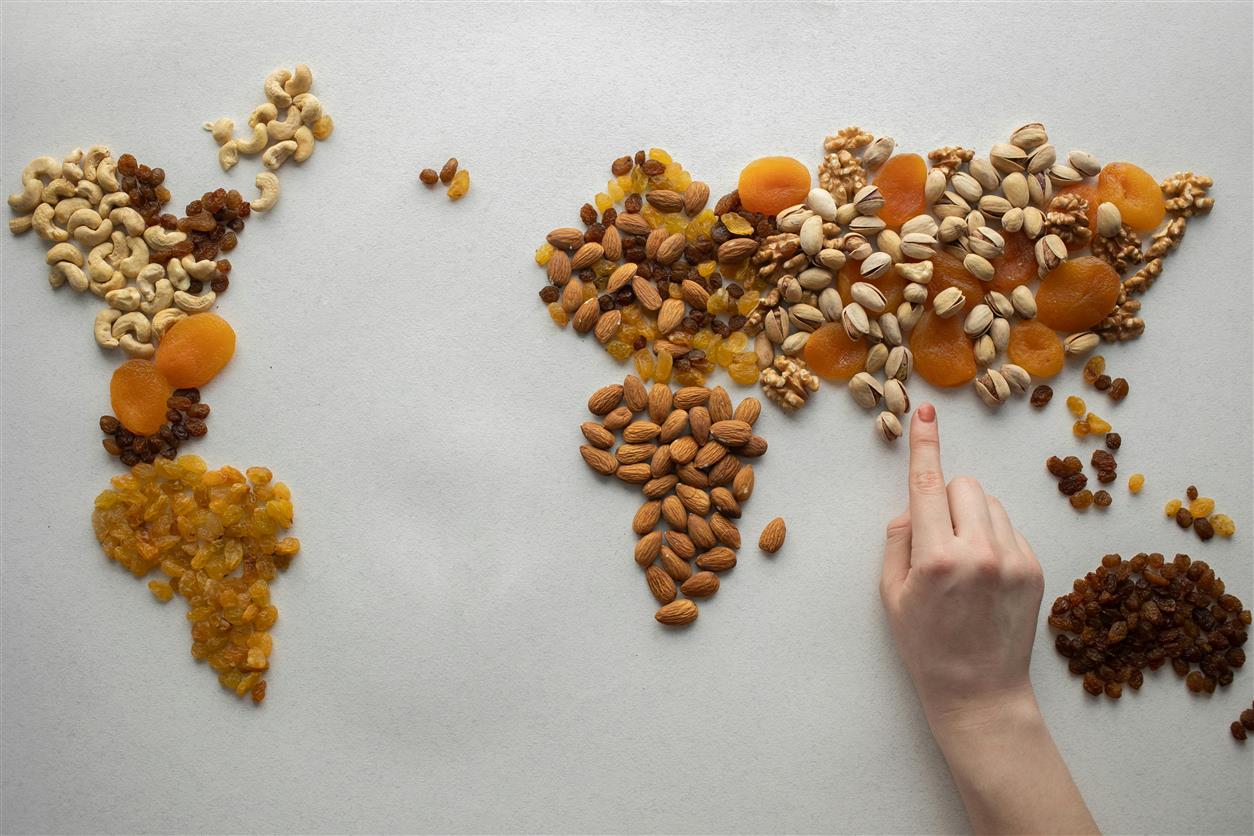
Food is a universal language that transcends borders, cultures, and traditions. Each cuisine carries with it a unique story, reflecting the history, geography, and values of its people. As globalization brings diverse cultures closer together, the influence of international cuisines on our dining experiences has never been more pronounced. This essay delves into some of the most influential cuisines around the world, exploring their origins, key characteristics, and impact on global culinary trends.
The Essence of Italian Cuisine
Historical Roots
Italian cuisine is renowned for its rich flavors, simple ingredients, and regional diversity. Its roots trace back to ancient Rome, where meals were characterized by the use of local ingredients and basic cooking techniques. The modern Italian cuisine we recognize today, however, evolved significantly during the Renaissance period, incorporating elements from different regions and cultures.
Key Characteristics
Italian cuisine emphasizes fresh, high-quality ingredients and uncomplicated preparation methods. Key elements include:
- Pasta: Italy’s iconic dish, with varieties ranging from spaghetti and penne to ravioli and tortellini. Pasta is often paired with sauces such as marinara, Alfredo, and pesto.
- Pizza: Originating from Naples, pizza is a staple of Italian cuisine, known for its thin crust and variety of toppings. Traditional pizzas include Margherita, with tomatoes, mozzarella, and basil.
- Olive Oil: Essential in Italian cooking, olive oil is used for sautéing, dressings, and as a finishing touch.
Global Influence
Italian cuisine has profoundly influenced global dining, with pizza and pasta becoming popular staples in many countries. The widespread popularity of Italian dishes has led to the proliferation of Italian restaurants and pizzerias around the world. The Italian approach to food also emphasizes the importance of family meals and enjoying food in a communal setting.
The Richness of Chinese Cuisine
Historical Roots
Chinese cuisine boasts a history that spans over 5,000 years, characterized by its diverse regional styles and techniques. The country’s vast geography and climate have contributed to the variety of ingredients and flavors found in Chinese cooking. The four primary culinary traditions are Cantonese, Sichuan, Shandong, and Jiangsu.
Key Characteristics
Chinese cuisine is known for its complex flavors and techniques. Key components include:
- Dim Sum: A style of Cantonese cuisine featuring small, flavorful dishes such as dumplings, buns, and spring rolls, typically served with tea.
- Sichuan Cuisine: Famous for its bold flavors and use of spices, including the numbing Sichuan peppercorns and spicy chili peppers.
- Noodles and Rice: Staple foods in Chinese cuisine, with dishes such as fried rice, noodles in broth, and stir-fried noodles being common.
Global Influence
Chinese cuisine has made a significant impact globally, with Chinese restaurants being prevalent in many countries. Dishes like sweet and sour chicken and Peking duck are well-known outside China. The influence of Chinese cooking techniques, such as stir-frying and steaming, has also permeated other culinary traditions.
3. The Vibrancy of Mexican Cuisine
Historical Roots
Mexican cuisine has ancient origins, with influences from indigenous cultures such as the Aztecs and Mayans. The Spanish conquest in the 16th century introduced new ingredients and techniques, blending with indigenous foods to create a diverse and rich culinary tradition.
Key Characteristics
Mexican cuisine is characterized by its bold flavors and vibrant ingredients. Key elements include:
- Tortillas: Made from corn or wheat, tortillas are used as a base for many dishes, including tacos, burritos, and enchiladas.
- Salsas and Sauces: Essential in Mexican cooking, salsas range from mild to spicy and are made with ingredients like tomatoes, chilies, and cilantro.
- Mole: A complex sauce made from chilies, chocolate, and various spices, mole is often served with poultry or pork.
Mexican cuisine has had a considerable impact on global food culture, particularly in the United States, where Tex-Mex cuisine has become popular. The flavors and ingredients of Mexican food have been embraced in various adaptations, from taco trucks to upscale Mexican restaurants.
The Diversity of Indian Cuisine
Historical Roots
Indian cuisine reflects the country’s rich cultural and historical heritage, with influences from ancient trade routes, colonization, and regional variations. The use of spices and herbs is a hallmark of Indian cooking, with each region offering its distinct flavors and dishes.
Key Characteristics
Indian cuisine is known for its complex spice blends and diverse regional dishes. Key elements include:
- Curries: Rich, spiced dishes often made with meats, vegetables, or legumes, and served with rice or bread. Popular curries include butter chicken and paneer tikka masala.
- Biryani: A flavorful rice dish cooked with spices, meat, and vegetables, often garnished with fried onions and fresh herbs.
- Naan and Roti: Traditional Indian breads that are used to scoop up curries and stews.
. Global Influence
Indian cuisine has influenced global food culture with the proliferation of Indian restaurants worldwide. Dishes like chicken tikka masala and naan have become popular in many countries, and the use of spices has inspired culinary experimentation in diverse cuisines.
The Sophistication of French Cuisine
Historical Roots
French cuisine is renowned for its elegance and technique, with roots that date back to the medieval period. The Renaissance era saw the refinement of French cooking, with the development of haute cuisine and the establishment of culinary standards that continue to influence modern cooking.
Key Characteristics
French cuisine emphasizes technique, presentation, and the use of high-quality ingredients. Key elements include:
- Pastries and Desserts: French baking is celebrated for its delicate pastries, including croissants, éclairs, and macarons. Desserts like crème brûlée and tarte tatin are also iconic.
- Sauces: French cooking is known for its sophisticated sauces, such as béchamel, hollandaise, and béarnaise, which complement a wide range of dishes.
- Cheese and Wine: France is famous for its diverse range of cheeses and wines, which are integral to its culinary culture.
. Global Influence
French cuisine has had a profound impact on global culinary practices, with French techniques and dishes forming the basis of classical cooking schools. The influence of French cooking is evident in fine dining establishments and culinary arts around the world.
6. The Flavor of Thai Cuisine
Historical Roots
Thai cuisine is a harmonious blend of flavors influenced by neighboring countries such as China, India, and Malaysia. Its evolution has been shaped by trade, immigration, and regional ingredients, creating a unique and vibrant culinary tradition.
. Key Characteristics
Thai cuisine is known for its balance of sweet, sour, salty, and spicy flavors. Key elements include:
- Tom Yum Goong: A spicy and sour soup made with shrimp, lemongrass, kaffir lime leaves, and chili.
- Pad Thai: A stir-fried noodle dish with tamarind paste, fish sauce, and a mix of vegetables, often garnished with peanuts and lime.
- Green Curry: A fragrant curry made with green chilies, coconut milk, and a variety of meats or vegetables.
. Global Influence
Thai cuisine has gained widespread popularity, with dishes like Pad Thai and Tom Yum becoming favorites in many countries. Thai restaurants and food trucks have introduced global diners to the intricate flavors and aromas of Thai cooking.
The Richness of Japanese Cuisine
. Historical Roots
Japanese cuisine is known for its emphasis on seasonality, freshness, and presentation. Influences from Chinese cuisine, along with indigenous ingredients and techniques, have shaped Japanese cooking into a refined and delicate art.
Japanese cuisine is characterized by its simplicity and attention to detail. Key elements include:
- Sushi and Sashimi: Fresh fish served raw or with rice, often accompanied by soy sauce, wasabi, and pickled ginger.
- Ramen: A noodle soup dish with a rich broth, typically topped with pork, egg, and vegetables.
- Tempura: Lightly battered and deep-fried seafood or vegetables, served with a dipping sauce.
Global Influence
Japanese cuisine has had a significant impact on global food culture, with sushi and ramen becoming popular in many countries. Japanese culinary techniques and ingredients are widely used in fusion dishes and high-end restaurants.
The Creativity of Spanish Cuisine
Historical Roots
Spanish cuisine reflects the country’s diverse history, with influences from Roman, Moorish, and indigenous traditions. The use of bold flavors and regional ingredients defines Spanish cooking.
Key Characteristics
Spanish cuisine is known for its vibrant flavors and communal dining style. Key elements include:
- Tapas: Small, varied dishes served as appetizers or shared meals, including items like patatas bravas, gambas al ajillo, and croquetas.
- Paella: A traditional rice dish from Valencia, made with saffron, seafood, and/or meat, and cooked in a wide, shallow pan.
- Churros: Fried dough pastries often served with chocolate for dipping, popular for breakfast or dessert.
Global Influence
Spanish cuisine has influenced global dining, with tapas bars and paella restaurants appearing worldwide. The communal and flavorful nature of Spanish food has inspired culinary trends in diverse settings.

The most influential cuisines around the world offer a glimpse into the diverse culinary traditions that shape our global dining experiences. From the elegance of French cuisine to the bold flavors of Mexican and the sophistication of Japanese food, each cuisine brings its unique story and flavor profile to the table. As global connectivity continues to grow, the exchange of culinary traditions enriches our understanding of food and culture, creating a vibrant and diverse world of flavors for everyone to enjoy.










